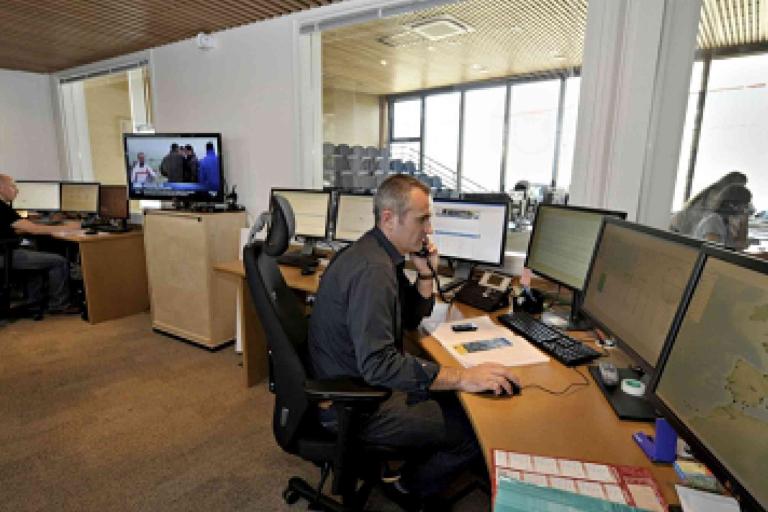France Gets Tsunami Ready
News was produced by: UNDRR, UNDRR ROECA

GENEVA, 30 January 2018 - Tsunamis may be rare events along the French coasts but they do occur. The French tsunami alert centre, CENALT, has already provided more than 24 tsunami information alerts and issued three tsunamis advisory warning messages since the beginning of its operations in 2012.
Hosted in the French atomic and alternative energy commission (CEA) in Bruyères-le-Châtel (Essonne), the centre monitors strong earthquakes and tsunamis occurring in the North-East Atlantic Mediterranean and Connected Seas (NEAM) and sends tsunami alerts to the public safety authorities in France and other countries in the region.
"CENALT does not only monitor seismic and tsunami activities around France and the Mediterranean Sea, it also covers the Northeast Atlantic up to Greenland and the Arctic”, said Francois Schindelé, seismologist, and tsunami international expert and Coordinator of CENALT.
“At the moment, it takes us only between eight to 13 minutes when an earthquake magnitude 5.5 has been detected to send an alert message to the French emergency authorities and national tsunami warning centers, or to other authorities in charge of tsunami warnings in the NEAM region. This includes the time to get available data from the different seismic networks in France and in other countries in the region, to analyze it, and then send a tsunami alert to emergency authorities,” he said.
Mr. Schindelé continued: “The immediate next step for a CENALT operator is to check the data coming from the hundreds of tide gauges located along the Western Mediterranean coast, implemented in France by the Navy’s Hydrographic and oceanographic service (SHOM) and by other institutions in the neighbouring countries.”
In addition to its monitoring activities, CENALT also organizes monthly and regular tsunami exercises with the Inter-Ministerial Crisis Operating Center (COGIC), based on a specific earthquake scenario, to train their operators on tsunami warning messages and products.
French coasts are mainly exposed to seismic activities coming from the North African coast where tsunami waves can hit France within one to two hours after the outbreak of an earthquake and from the Ligurian Sea, where tsunami waves can reach French shorelines in less than 10 minutes after a tremor.
The last major tsunami in the Ligurian Sea happened in 1887, and a more recent event took place in the North Africa Margin in 2003, when the Boumerdès 6.9 magnitude earthquake killed 2,300 people and triggered waves two meters high in the Balearic Islands, impacting over 200 boats in eight harbors on the French Rivera with strong currents and sea withdrawal.
CENALT is one of the five Tsunami Service Providers that integrates the North-Eastern Atlantic, Mediterranean and Connected Seas (NEAM) Tsunami Warning System together with Portugal, Greece, Italy, and Turkey. Three other early warning systems exist in the Pacific (operational for 50 years), in the Indian Ocean, and in the Caribbean.
The last tsunami in the NEAM region, however, was triggered not by seismic activity, but by a landslide, hitting the Greenland coast around the villages of Nuugaatsiaq, Illorsuit, and Uummanna in 2017. The tsunami caused four deaths and destroyed 11 houses.
"This type of tsunami previously occurred on the French Rivera on October 16, 1979, when a submarine landslide close to Nice airport triggered a tsunami with waves up to 3.5m high. These events are a bit different as landslides generate smaller tsunamis than earthquakes,” explained Mr. Schindelé.
“Landslide tsunamis are characterized by high and fast impact in a very small area which makes them more difficult to detect through the tsunami warning systems currently in place. New research is needed to develop specific local monitoring and warning systems at each potential landslide source and this is one of the challenges of setting up the Global Tsunami Warning System,” concluded M. Schindelé.
Since the year 2000, more than 11 million people have been affected by tsunamis and these have resulted in some 250,000 deaths with the highest death tolls in Indonesia, Sri Lanka, Japan, India and Thailand. UNISDR coordinates the annual World Tsunami Awareness Day activities on November 5 each year.
- WMO Member:
- India

